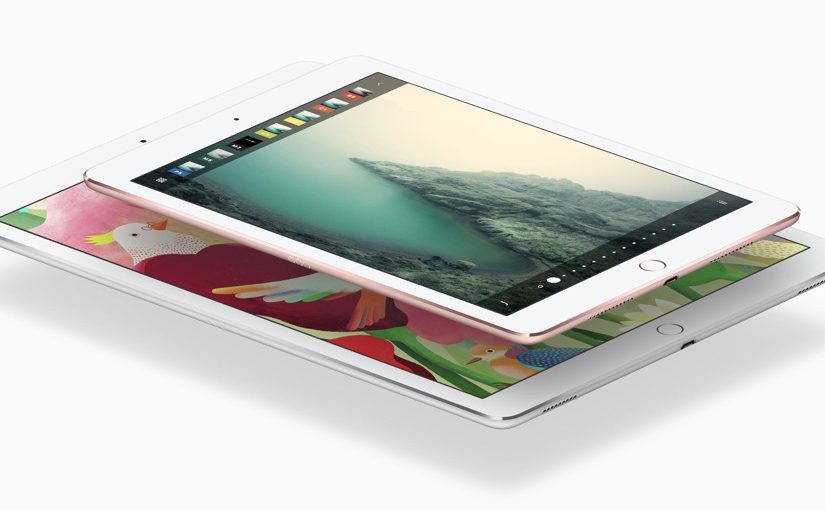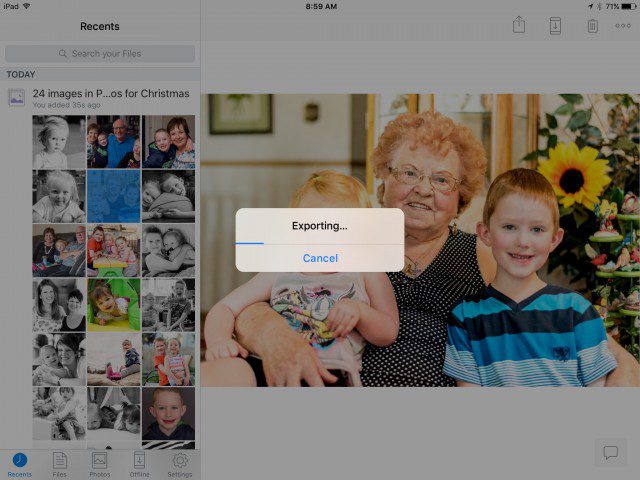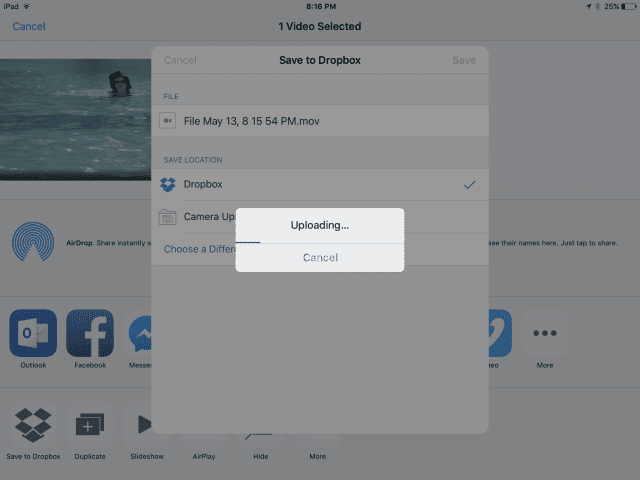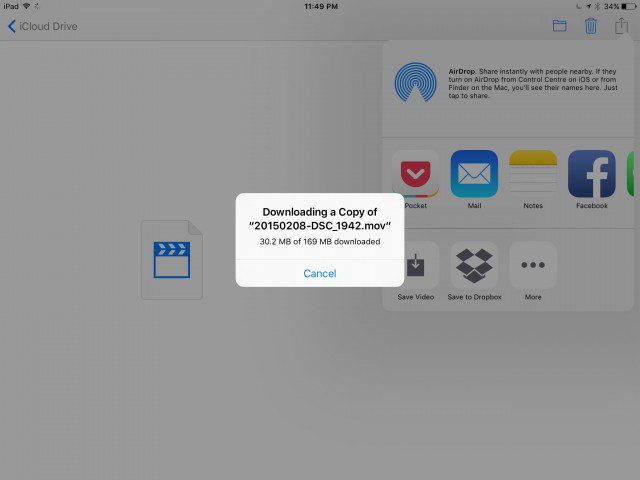It’s become a common refrain for Apple to position iPads as being laptop replacements. It reached a fever pitch with the introduction of the really damn big iPad Pro last year. As much as I love my iPad – it’s my most-used personal computing device, more than my phone most days – and as impressive as my new 128 GB iPad Pro Jr. is (that’s what my friend Todd Ogasawara calls this model, Apple’s naming is silly), Apple is simply not allowing the iPad hardware, and iOS, to evolve to the point where it would seriously cannibalize sales of their laptops. Now I admit for some people who use their laptops for pure consumption, an iPad may in fact replace their laptop 80% of the time. I know my sister hardly touches her laptop any more once she bought an iPhone + iPad.
For me, there are three reasons why my iPad still can’t replace my laptop – and they aren’t what you might expect (such as not having an always-attached keyboard).
The Lack of Real Multitasking & Background Processes
In a lot of ways, using iOS reminds me of DOS. Yes, most apps can be given permission for background access, but not all of them can do so (mostly due to the choices of developers at this point from what I understand), and often that access is very limited. Amazon Video is infamous for this: when the app first launched, you had to leave it running in the foreground for any video downloads to occur. I recall walking through an airport with the iPad kept on so I could finish downloading a video. The most recent version of this app (as of May 2016) will download if it has background permissions, but it will not download it the iPad is suspended. iTunes will download videos when suspended, so I’m unclear as to why Amazon Video can’t do the same.
What’s worse though is the way apps export and import media: in a fixed window that forces you to do absolutely nothing until the process is completed. I see screens like these below so often it hurts.
Saving images is slow and often limited to one at a time in many apps.
What can you do while you wait for a large video or file to upload? Nothing.
You’d think that iCloud would have a more sophisticated approach to file transfer, right? Nope, it’s just the same as the others. Using iCloud as a transfer method for videos is painful because of this – thankfully how amazingly Airdrop works makes up for it and is my default way to get videos onto my iPad.
Let’s not forget any type of export process that’s time consuming, such as rendering a video. What can I use my iPad for while I’m exporting a video? Absolutely nothing. 15 years ago when I was exporting video on a desktop PC I couldn’t use it for anything else, but that was because the resources were so constrained. Now, on my iMac when I’m exporting a video I keep working on other things, including editing more video (FCPX is pretty amazing in this regard, even if the video export process is slower than is should be). There is no CPU constraint on the iPad, it’s simply an OS and app constraint.
So what would I like to see? Default background file transfers. Multi-threaded file transfers built into apps so I could keep using the app while I upload or download files. Perhaps some of this functionality is already possible, but I’m not seeing app developers leveraging it.
The Default App Lock-In
It’s easy to understand why Apple doesn’t allow users to escape use of their apps, but that doesn’t make it any less frustrating. I don’t consider iOS Mail, Maps, or Safari best-of-breed. Yet we’re forced to use them by default in a variety of ways. Thankfully, Outlook for iOS allows you to specify which browser it uses, so when I’m reading an email and click on a link, Chrome will open. That’s the only way I’ve found to escape the default app lock in. I still have to keep Mail configured though, because some apps I use expect it to be configured to send email – they don’t allow you to email with an alternate client.
Imagine if Microsoft shipped Windows and Internet Explorer (or Edge) was a default browser and you couldn’t change that? Or Windows Mail was the default client and you could never use another client when clicking on an email link? Microsoft would be slammed by the press. But up until recently, I haven’t seen many complaints about this. Apple should allow users to specify global default apps, and make it easy for developers to call those apps without assuming the iOS apps are configured.
‘Ain’t Got No Ports, Slots, or Real Video Output
When the rumours about the iPad Pro popped up, I held a tiny sliver of hope that Apple was targeting digital professionals and we’d see a powerful iPad with an SD card slot, DisplayPort, or perhaps USB-C for further expansion. I know Apple’s desire to eliminate ports entirely, but I also know they must have heard from pros who dislike carrying dongles and adapters. There’d need to be accompanying improvements in the software as well. I’ve had Adobe reps tell me that Apple doesn’t currently allow them to do a direct import of raw/JPEG files into Lightroom; everything has to go through the camera import app, which means double-storage of files. It’s a mess and Apple hasn’t done anything to acknowledge the workflow of photography enthusiasts. And, yes, I’d very much enjoy being able to use my iPad to do a first-pass review of photos and sync back to Lightroom when I returned home. Right now it’s too much hassle and storage used.
Airplay video is a nice feature, but let’s face it, the quality is weak – Apple went with a very low-tech approach, and it’s the same for their HDMI output dongle. There’s no intelligence, no resolution options, etc. There’s definitely room for improvement when it comes to video output from an iPad.
Ultimately I’ll continue to use my iPad frequently, but it also means I’ll continue to travel with my personal laptop for the occasions when my iPad just can’t cut it…



